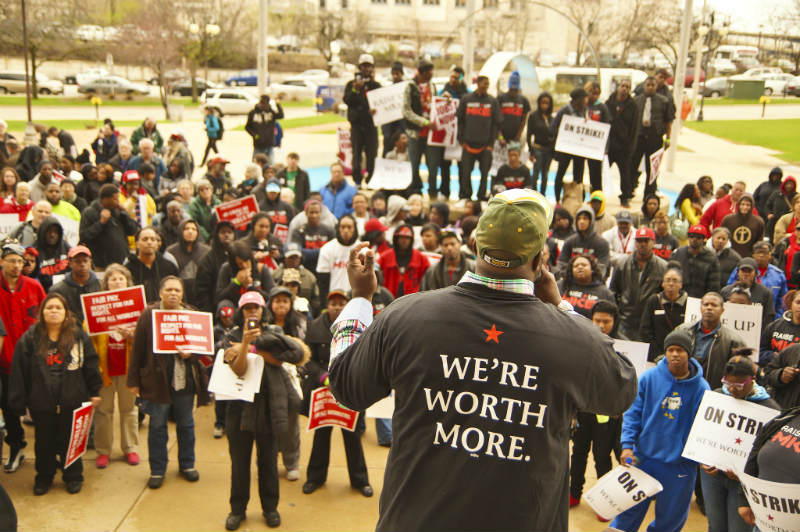
As Right to Work spreads, people are realizing it fattens the wallets of CEOs more than workers. (Light Brigade / Flickr / Creative Commons)
The county officials did it at the bidding of big corporations. They certainly didn’t do it for their Warren County constituents because employees in right-to-work (for less) states get smaller paychecks than those in states that support the right to unionize. They did it at the demand of the American Legislative Exchange Council (ALEC) and the Heritage Foundation, both of which are corporate owned and operated.
They did it despite the fact that there’s no evidence they have any legal authority to create an anti-union bastion on the county level, which means they’ve subjected the residents of Warren County to substantial costs for a legal battle that Warren is likely to lose.
Moving right-to-work (for less) from the state to the county level is the latest tactic in the relentless campaign by CEOs and corporations to reverse gains made by workers in the 1930s New Deal. With laws like the Fair Labor Standards Act (FLSA) and National Labor Relations Act (NLRA), President Franklin D. Roosevelt and a Democratic Congress slightly moved toward workers the lopsided balance of power that heavily favors corporations. Over the next several decades, the middle class thrived and income inequality decreased substantially. Now, however, income inequality is back up to the point where it was in the robber baron days because CEOs and corporations have stuck their fat thumbs back on the scale.
The FLSA created the 40-hour work week by mandating time-and-a-half pay beginning at the 41st hour worked. Before the law, managers could force employees to labor 50, 60 even 70 hours a week at no extra pay. During the Great Depression, bosses could fire those who dared complain and easily replace them. Corporations had all the power. FLSA gave a little of that muscle to workers by enabling them to demand extra pay for extra work. As a bonus, FLSA encouraged businesses to hire rather than pay overtime, which increased employment.
The NLRA provided workers with a pathway to unionize. It established standards for employees to form a union at a workplace and for employers to recognize that union as the collective bargaining agent for the workers. Before the NLRA, Pinkertons, police and national guardsmen all too frequently killed striking workers. After the NLRA, unions multiplied, and collective bargaining achieved better wages, benefits and pensions for workers.
But from the day these laws passed, corporations and lackey groups like ALEC and the Heritage Foundation fought to reverse them. They wanted all power and wealth to remain with the one percent.
READ MORE:http://inthesetimes.com/working/entry/17483/right_to_work_benefits_ceos_not_workers
No comments:
Post a Comment